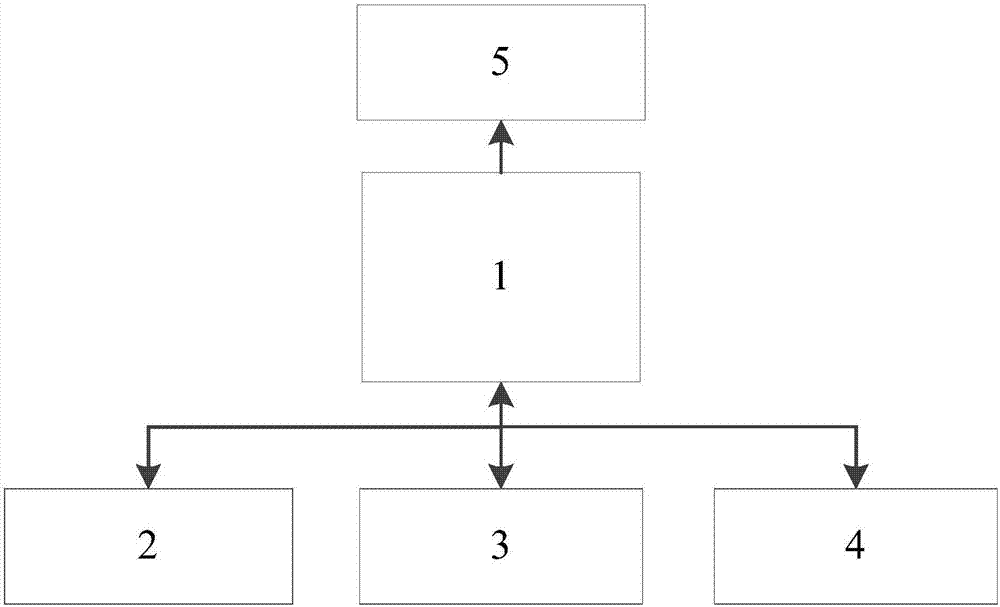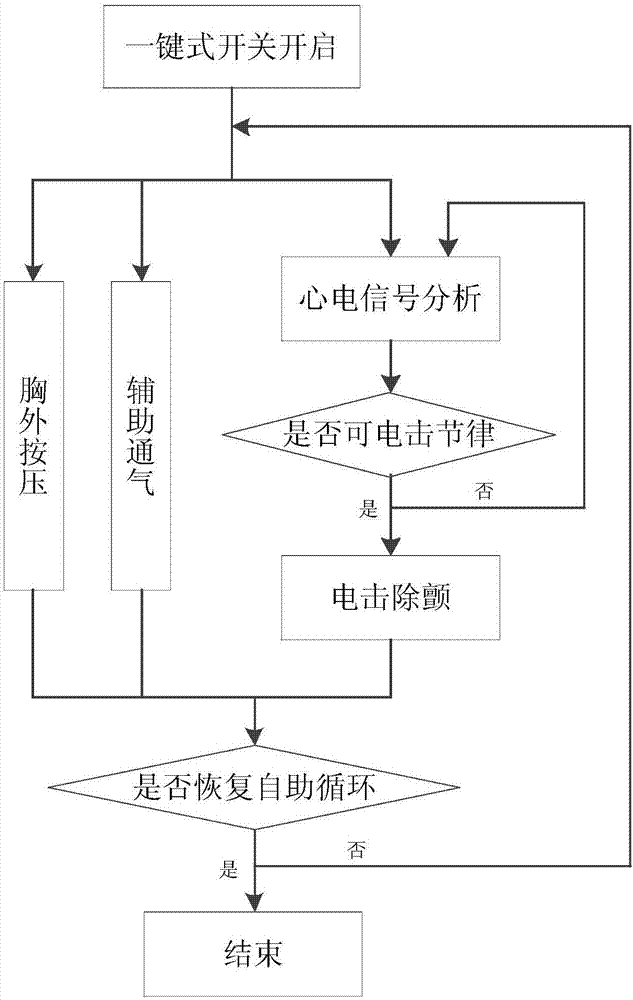Sudden cardiac arrest first-aid integrated device
A technology for cardiac arrest and ECG signals, applied in cardiac stimulation, cardiac defibrillator, artificial respiration, etc., can solve the problems that compression and defibrillation cannot be performed at the same time, and the physical and mental energy of cardiopulmonary resuscitation is high, which is conducive to self-help circulation. The effect of establishing, improving blood perfusion time and reducing difficulty
- Summary
- Abstract
- Description
- Claims
- Application Information
AI Technical Summary
Problems solved by technology
Method used
Image
Examples
Embodiment 1
[0039] A kind of cardiac arrest first aid integrated device, see figure 1 , the device includes: a microprocessor 1 , an external defibrillation module 2 , a chest compression module 3 , a breathing assistance module 4 , and a voice prompt module 5 .
[0040] The whole device is controlled by the microprocessor 1, operates the external defibrillation module 2, the external chest compression module 3, and the assisted breathing module 4 to provide first aid to the patient, and uses the voice prompt module 5 to instruct rescuers. Among them, the patient's physiological signals, pressing, and breathing related reference signals are uploaded to the microprocessor 1 by the integrated sensor in the corresponding module, and the microprocessor 1 analyzes and determines the next step.
[0041] The workflow of the whole device is as follows figure 2 As shown, after the rescuer places the patient in the correct position according to the voice prompt module 5, the first aid process is ...
Embodiment 2
[0050] Below in combination with specific calculation formulas and examples, the microprocessor 1 in Embodiment 1 performs interference noise filtering on ECG signals and the process of ECG rhythm type identification is further introduced, see the following description for details:
[0051] Since the chest compression process will introduce serious noise interference in the ECG, the ECG analysis algorithm cannot accurately classify the ECG rhythm. Therefore, the purpose of the embodiment of the present invention is to filter out the chest compression interference noise in the ECG signal , so that continuous chest compressions and electrocardiographic signal analysis before electrical defibrillation can be implemented simultaneously, without the need to pause chest compressions before implementing electrical defibrillation.
[0052] 1) With 250Hz as the sampling frequency, sample the ECG signal for 10s, with a total of 2500 sampling points;
PUM
 Login to View More
Login to View More Abstract
Description
Claims
Application Information
 Login to View More
Login to View More - R&D
- Intellectual Property
- Life Sciences
- Materials
- Tech Scout
- Unparalleled Data Quality
- Higher Quality Content
- 60% Fewer Hallucinations
Browse by: Latest US Patents, China's latest patents, Technical Efficacy Thesaurus, Application Domain, Technology Topic, Popular Technical Reports.
© 2025 PatSnap. All rights reserved.Legal|Privacy policy|Modern Slavery Act Transparency Statement|Sitemap|About US| Contact US: help@patsnap.com



